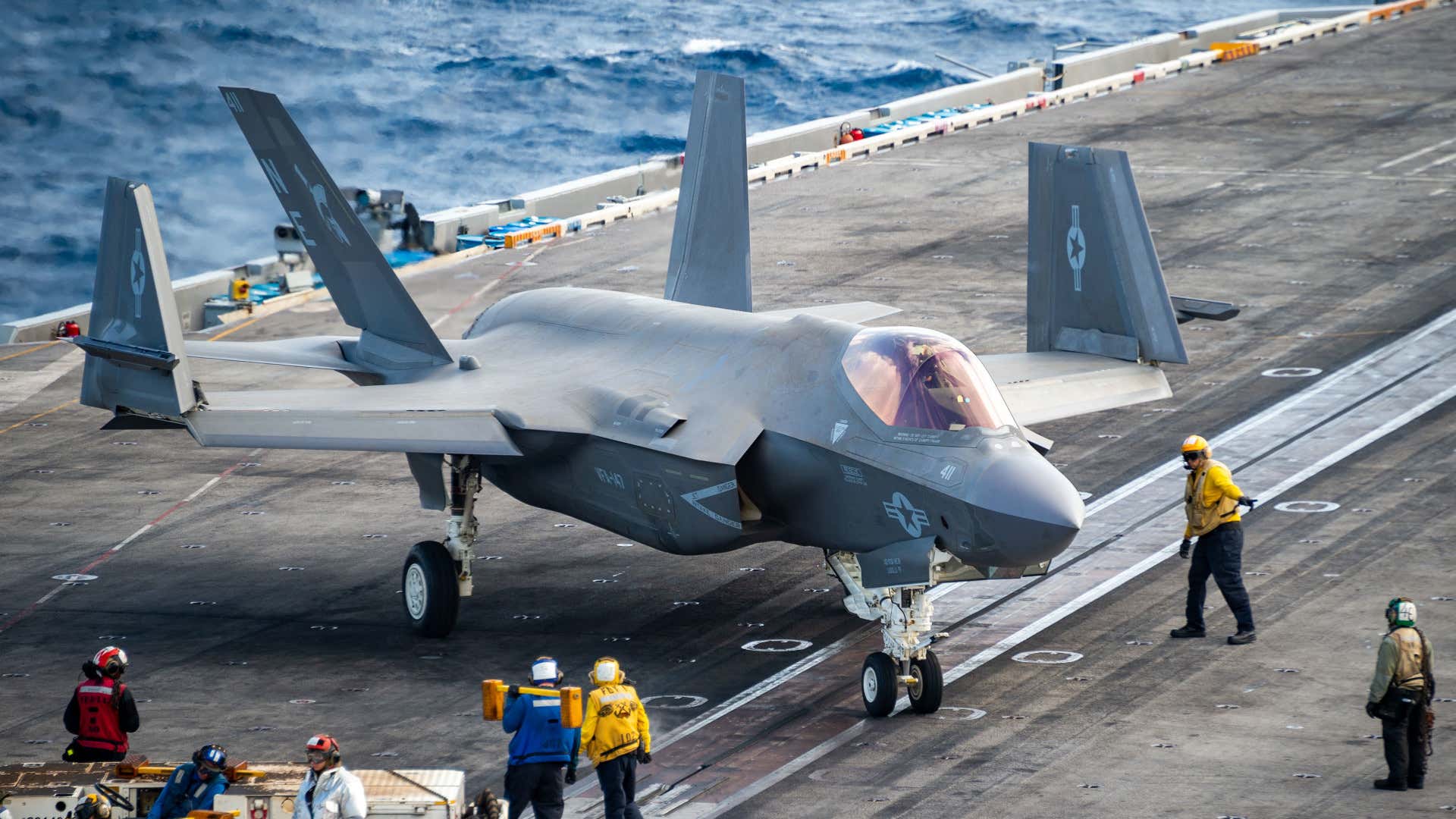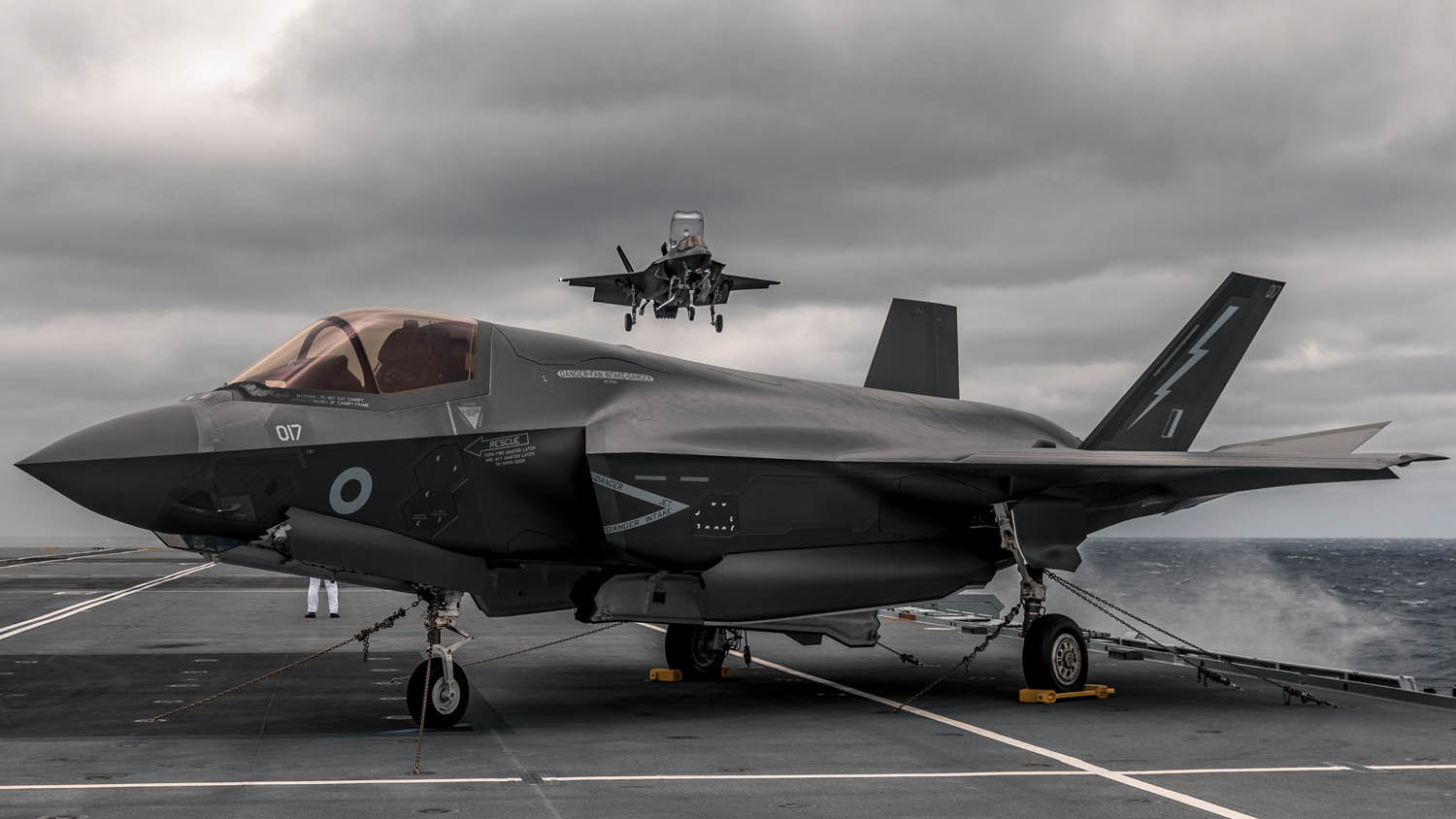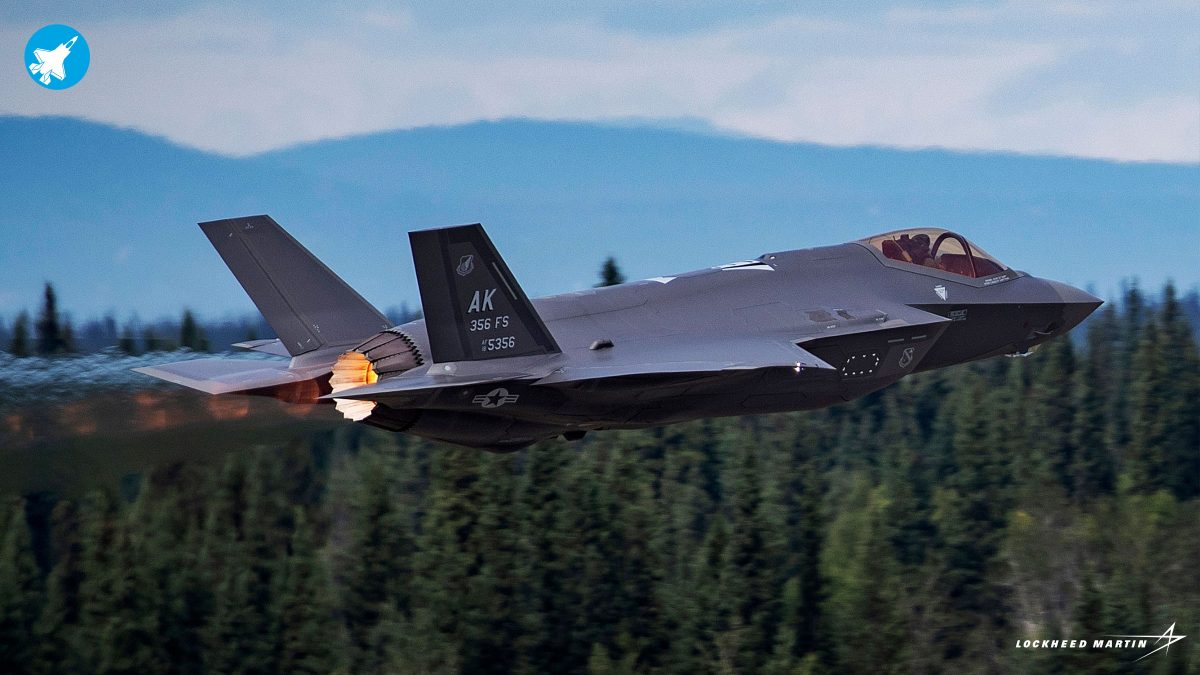A US Navy F-35C had experienced a “landing incident” on the deck of the Carl Vinson aircraft carrier in the South China Sea. Seven US military personnel were reportedly injured in the mishap reported on January 24 while the pilot ejected safely, the Navy said in a statement.
Shocker For Beijing: Chinese Hypersonic Weapons Technician Working On DF-17 Missiles Defects To The West — Reports
This is the first-ever crash involving the F-35C stealth fighter plane. An investigation has been launched to find out the exact cause of the accident.
The pilot was performing routine flight operations when the incident took place. After his safe ejection, the pilot was recovered by a military helicopter, according to the Navy.
Three of the seven injured sailors had to be airlifted to Manila, Philippines, for treatment, while the other four were taken care of by a medical team on board the aircraft carrier.

The Air Force’s F-35A is capable of taking off and landing on standard runways, while the Marine Corps’ F-35B is a short-takeoff vertical landing variant that can operate off the Navy’s amphibious assault ships.
These two variants are also operated by US allies and partners, including Japan, South Korea, the United Kingdom, Australia, Italy, Norway, the Netherlands and Israel. Many other countries have also ordered these variants.
Lockheed Martin, the aircraft manufacturer, claims that the US Navy variant, F-35C, is said to have more robust landing gear for carrier-based operations, folding wings to fit on a packed flight deck, larger wings, a somewhat greater payload, and a slightly longer operating range. This variant entered into the service in 2019.
“This deployment marks the first time in US naval aviation history that a stealth strike fighter has been deployed operationally on an aircraft carrier,” Lockheed Martin said. Out of the US Navy’s 11 aircraft carriers, Carl Vinson was the first to deploy with the F-35C after it left San Diego last August.
Carl Vinson and its escorts were involved in dual-carrier operations with the USS Abraham Lincoln Strike Group in the South China Sea when the latest disaster happened.
F-35 Fighters: Previous Accidents
The January 24 incident is the second F-35 plane crash so far this year. The EurAsian Times had previously reported that the pilot of a South Korean F-35 performed an emergency “belly landing” at an airbase on January 4, after the landing gear malfunctioned owing to technical difficulties.
It was initially reported that the left engine intake of the South Korean F-35 had suffered a bird-hit before it crash-landed. However, a detailed investigation into the glitches in the plane’s avionics and the landing gear is still going on.
The high-end fighter aircraft has been involved in seven incidents (including the latest incident) in recent years. In November 2021, a British Royal Navy’s F-35B short takeoff and vertical landing (STOVL) crashed into the Mediterranean Sea during takeoff from HMS Queen Elizabeth. The pilot was able to eject safely.
The British F-35 mishap was reportedly caused by a rain cover getting sucked into the engine. The UK Defense Ministry, however, has not issued an official statement on the cause of the crash.
Later, a video surfaced online that appeared to display the fifth-generation aircraft slipping off the aircraft carrier’s ski jump and crashing into the sea during a takeoff mishap.
In September 2018, a US Marine Corps F-35B crashed in South Carolina. The incident happened on an uninhabited island near the Grays Hill community. The plane was housed at Marine Corps Air Station Beaufort and crashed during a regular training mission.
The Marine pilot was able to eject safely before the crash and did not suffer any serious injuries. The US military then grounded its entire fleet of F-35 stealth fighters. The cause was later determined to be a defective fuel tube.
“An investigation determined a manufacturing defect caused an engine fuel tube to rupture during flight, resulting in a loss of power to the engine,” the Government Accountability Office said in a report issued a year later. The Pentagon’s F-35 program office announced in 2019 that some Pratt & Whitney fuel tubes would be changed as part of routine maintenance.

In May 2020, a US Air Force F-35 crashed on landing at Eglin Air Force Base in Florida. At the time of the accident, the pilot was participating in a routine night training sortie. The pilot and the plane’s systems were both responsible for the disaster, the US Air Force said.
According to an Air Force investigation, excessive landing speed was the main cause of the F-35A crash, although faulty flight control logic, issues with the helmet-mounted display, the jet’s oxygen system, and ineffective simulator training were all contributed to the mishap.
In October 2020, a Marine F-35B aircraft crashed near Naval Air Facility El Centro, Calif., following an air collision with a KC-130J. The incident took place when the KC-130J tanker was conducting a mid-air refueling of the F-35B.
The F-35B pilot successfully ejected from the plane, and the KC-130J made an emergency landing near Thermal, Calif. After receiving medical evaluations, the individuals returned to their respective units, according to the Marine Corps.

“The KC-130J and F-35B were taking part in Weapons and Tactics Instructor (WTI) course 1-21,” the spokesperson said. “WTI is a seven-week training event hosted by Marine Aviation Weapons and Tactics Squadron One, which emphasizes operational integration of Marine Corps aviation in support of a Marine Air-Ground Task Force.”
In September 2019, a Japan Air Self Defense Force F-35A crashed into the ocean during a night training flight, killing the pilot. Maj. Akinori Hosomi, whose remains were later discovered, was unlikely to have attempted to eject from his plane, according to the report. The majority of the plane’s wreckage is still on the seafloor, around 5,000 feet below the surface.
Spatial disorientation was blamed by the Japanese military for the disaster. Spatial disorientation is a situation in which a pilot cannot correctly sense the position, attitude, altitude, or motion of an airplane.
- Contact the author at ashishmichel@gmail.com
- Follow EurAsian Times on Google News




